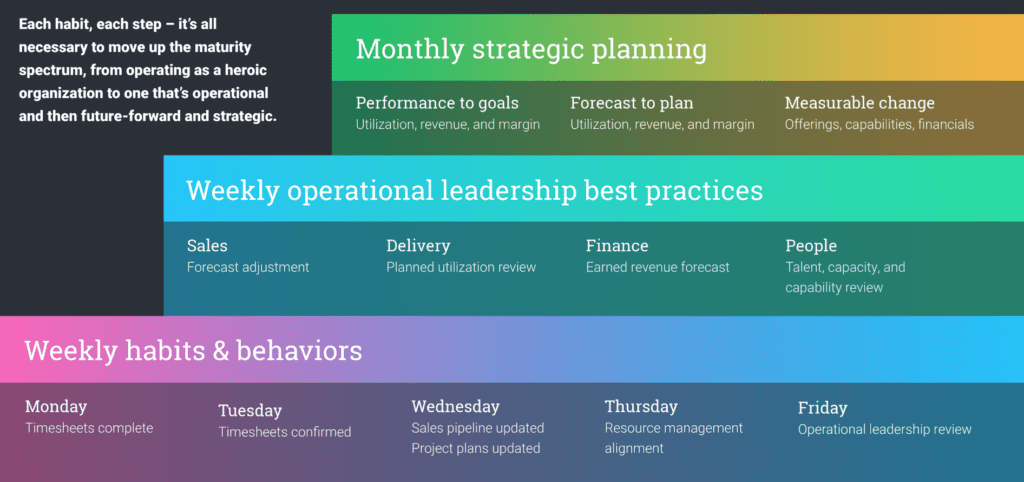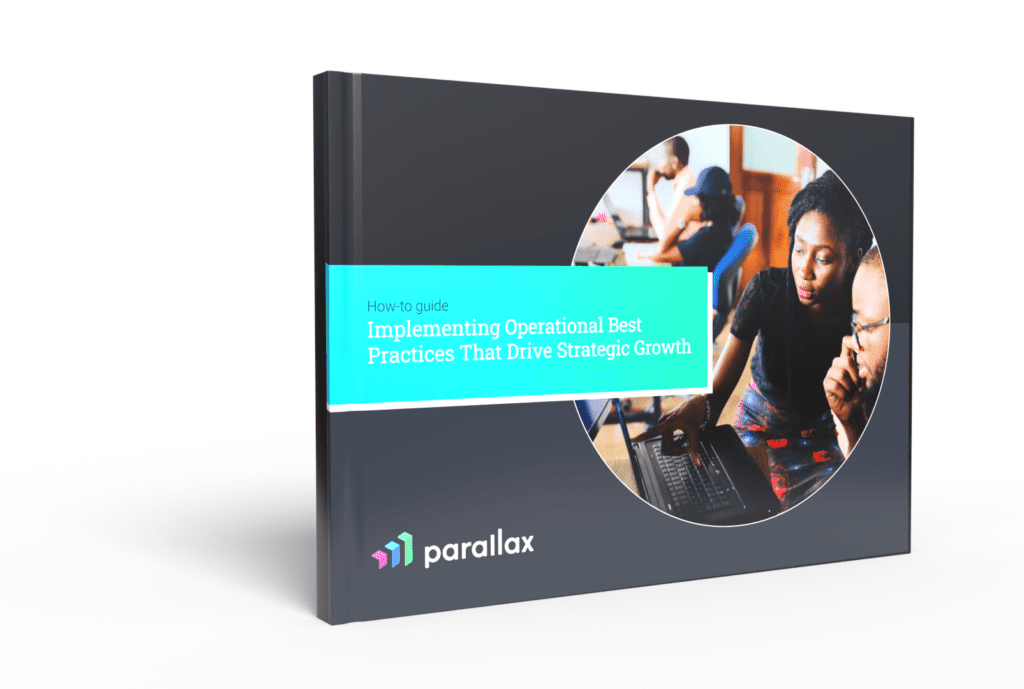Driving Strategic Growth Requires Mastering the Basics
Every digital services company has basic operations in place to track their people, projects, sales, and revenue. What and how they’re tracking the various functions of the business is incredibly important, as that data helps to shape important strategic decisions. Too many companies today, however, have a disconnected array of tools that makes it time consuming to see across the business. Plus, separate tools and data streams lead to misaligned points of view on the state of the business – especially when it comes to managing resources. Decisions become reactive and rife with emotion and friction. People feel like they’re on a roller coaster of too much or not enough work – or too many or too few people to do that work!
To break this pattern, leaders need to remove the gut feelings related to strategic decision making and instead curate a shared perspective based on reliable data.

To drive that shared perspective, they need a measured and consistent cadence of inputs from the sales pipeline and project backlog, otherwise known as an operational cadence. By getting into an agreed-upon routine and cadence of reviewing and validating data across timekeeping, active project backlog, and sales pipeline systems, for example, organizations set themselves up for greater visibility into business performance – and we all know that greater visibility leads to happier, healthier, and more strategic operations.
Three operational cadence best practices
The good news is that it takes everyone to get onboard with only three foundational weekly habits: timesheets need to be completed by everyone, project plans need to be updated by the delivery teams, and the sales pipeline needs to be updated by the sales team:
- Timesheet review and validation: Time-tracking accountability is the only opportunity digital services companies have to measure how good of a job they did in their last round of future prediction. The variances between what they thought would happen and what actually happened is only possible if they have accurate timesheets. That’s why, every week, everyone needs to have their timesheets completed and then those timesheets need to be reviewed and approved. We get it. Timesheets are a bummer, but don’t let perfection get in the way of progress! Even directionally accurate and regular entry is better than chasing people down for timesheets weeks or months after the work was completed!
- Active project backlog review and validation: This habit represents the organization assessing what it thinks the future holds. It measures prior variances, makes adjustments accordingly, and has the best possible picture of what it thinks future capacity looks like. Then, teams can better communicate what resourcing needs they might have.
- Sales pipeline review and grooming: This final habit requires the sales team to do essentially the same thing that the project teams are doing: providing insights as to what projects are going to close and the resulting impact to capacity by closing those projects. This allows the organization to more confidently forecast where it might need to be hiring.
Quick Wins Deliver Big Impact
Adopting a new process often comes with fears of change management, poor adoption, and too much effort, but it doesn’t have to be that way! Starting small and addressing basic operational outputs is a great way to find early wins and see immediate impact. And it doesn’t require months or years of high-effort, highly disruptive change that forces teams to adopt new tools or platforms.
At Parallax, we believe that small steps will lead to more mature operations around resource planning and forecasting. By simply introducing a rhythm to review timesheet and sales pipeline data – regularly and consistently – organizations will quickly discover ways to drive utilization, margin, and revenue.

The best part? You’re not alone. At Parallax, we have tools and experts ready, willing, and able to help your organization embrace that next stage of growth. We’re here to guide you in establishing an operations cadence that works best for your business. And we’re here to support your pursuit of more value and insights out of the systems you already have by integrating them with our platform to create new insights that power innovative growth.

Interested in learning more?
We explore operational cadence best practices in depth – detailing exactly how to excel at each individual process and why it’s important to success – in our latest e-book: How-To Guide: Implementing Operational Best Practices that Drive Strategic Growth.


